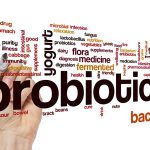The non-viable probiotics are the inactivated and dead cells of probiotic bacteria and are part of the group of postbiotics. These include materials such as cell-free supernatants, bacterial pili, bacteriocins, exopolysaccharides and teichoic acids. The interest generally in postbiotics could be as a direct replacement for antibiotics. They have also been called paraprobiotics.
These products have anti-inflammatory, antibacterial, and immunomodulatory effects (Fang et al., 2014; Jeong et al., 2019).
Live bacteria are inactivated using a variety of methods. Heat killing is still preferred and treatment of a bacterial suspension at temperatures above 100ºC for 30 minutes is largely the accepted approach. Alternatives include treatment with cell-damaging chemicals like formalin, gamma and ultraviolet radiation, cell freezing, tyndallization and sonication etc. Other novel technologies such as high pressure processing, ohmic heating are being tested too.
Each approach will generate a different type of non-viable probiotic because they affect the cell’s bacterial componentry differently. Structural components within the body of the cell as well as those within cell membranes and those exposed at the cell surface will all alter depending on the application.
One study used a mix of three strains of Lactobacillus acidophilus to see if a combination would make a better probiotic (actually postbiotic by definition) as a multistrain mixture (Mix-LAB) rather than just using a single strain (monostrain) (Lin et al., 2007). This was tested against the the invasion of Salmonella typhimurium into cultured cells and into liver and spleen of live mice. The Mix-LAB feeding reduced Salmonella invasion better than a saline control but could not stop invasion completely. It’s a good example of a postbiotic in the form of dead probiotic cells. The postbiotic did activate the immune system which is the immunomodulatory role rather than one which involved adherence of Lactobacilli to the epithelium of the intestine.
Heat-killed probiotic strains of Lactobacillus and Bifidobacterium have also been tested against a range of oral pathogens such as Streptococcus mutans, Porphyromonas gingivalis, Fusobacterium nucleatum and Aggregatibacter actinomycetemcomitans. In this case the postbiotic was not as effective in their antibacterial performance as the viable bacteria (Chen et al., 2020). The researchers were clear that the hydrogen peroxide generating behaviour of the viable bacteria was not responsible for the inhibitory effect but there are clearly other factors at play.
Another study on oral pathogens comparing viable and heat-killed probiotic strains did however act against Streptococcus mutans. One of the effects was to raise the formation of immunoglobulin A (IgA) (Lin et al., 2021).
The idea of using viable and postbiotics is a lozenge containing these cells in whatever form to treat oral pathogens.
In an inflammation study, heat-killed and live Lactobacillus rhamnosus GG can modulate the expression of three pro-inflammatory cytokines in
5-fluorouracil (5-FU)-induced intestinal mucositis in vitro. Mucositis in various forms occurs with aggressive chemotherapy and any form of alleviation is welcome (Fang et al., 2014).
References
Chen, Y. T., Hsieh, P. S., Ho, H. H., Hsieh, S. H., Kuo, Y. W., Yang, S. F., & Lin, C. W. (2020). Antibacterial activity of viable and heat‐killed probiotic strains against oral pathogens. Letters in applied microbiology, 70(4), 310-317 (Article).
Fang, S.B.; Shih, H.Y.; Huang, C.H.; Li, L.T.; Chen, C.C.; Fang, H.W. (2014) Live and heat-killed Lactobacillus rhamnosus GG upregulate gene expression of pro-inflammatory cytokines in 5-fluorouracil-pretreated Caco-2 cells. Support. Care Cancer 22, pp. 1647–1654 (Article).
Jeong, M.; Kim, J.H.; Yang, H.; Kang, S.D.; Song, S.; Lee, D.; Lee, J.S.; Yoon Park, J.H.; Byun, S.; Lee, K.W. (2019) Heat-killed Lactobacillus plantarum KCTC 13314BP enhances phagocytic activity and immunomodulatory effects via activation of MAPK and STAT3 pathways. J. Microbiol. Biotechnol. 29, pp. 1248–1254. .
Lin, W. H., Yu, B., Lin, C. K., Hwang, W. Z., & Tsen, H. Y. (2007). Immune effect of heat‐killed multistrain of Lactobacillus acidophilus against Salmonella typhimurium invasion to mice. Journal of Applied Microbiology, 102(1), pp. 22-31 (Article)
Lin, WY., Kuo, YW., Chen, CW. et al. (2021) Viable and Heat-Killed Probiotic Strains Improve Oral Immunity by Elevating the IgA Concentration in the Oral Mucosa. Curr Microbiol 78, pp. 3541–3549 (Article)
Taverniti, V., Guglielmetti, S. (2011). The immunomodulatory properties of probiotic microorganisms beyond their viability (ghost probiotics: proposal of paraprobiotic concept). Genes Nutr. 6: pp. 261-274.

Not many people write about non-viable probiotics. I always assume its about postbiotics etc.